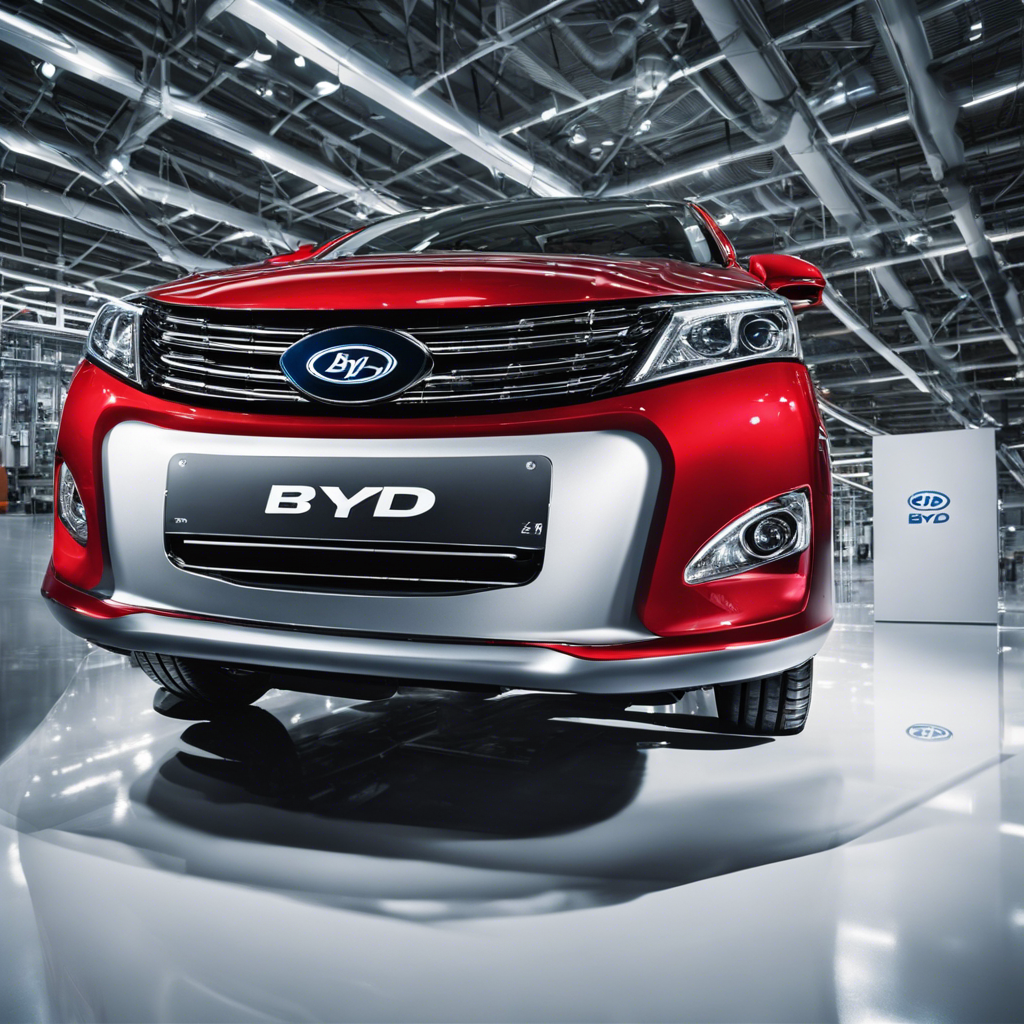Blog

- Details
- Written by: lausm
- Category: Blog
- Hits: 1696
Nikkei Business Publications(BP) previously conducted a teardown analysis of the Chinese electric vehicle BYD Seal, in collaboration with Masayoshi Yamamoto, focusing on its power converters such as the inverter and the DC-DC converter. The findings presented by Yamamoto were based on the results of this teardown.
The teardown revealed that the power modules, equipped with power semiconductor components, were manufactured by BYD. These power modules bear a striking resemblance to the “HybridPACK Drive” power modules produced by Infineon Technologies, a leading German semiconductor manufacturer. It is suggested that BYD’s modules could potentially match or even surpass the performance of Infineon’s.
Infineon is the world’s largest power semiconductor company, and its HybridPACK Drive modules are extensively used in the automotive industry. Since its release in 2017, the HybridPACK Drive has shipped over one million units by May 2021. This indicates that BYD has developed the capability to produce power modules that compete with those from a top industry player.
Predicting BYD’s future in self-research and development, considering their demonstrated ability to produce high-quality power modules in-house, it is likely that BYD will continue to invest in R&D to further enhance their technological capabilities. BYD’s apparent success in creating products comparable to the industry leader suggests a strong potential for the company to become a formidable force in the power semiconductor space. As the electric vehicle market grows, BYD’s commitment to self-research and development could well position them as a key player in the global automotive supply chain, competing with established semiconductor giants and possibly leading to innovations in electric vehicle technology.

- Details
- Written by: lausm
- Category: Blog
- Hits: 1655
while Apple and Samsung lead with positions 1 through 5
Apple and Samsung, long-standing titans of the industry, continued their dominance by securing the first and fifth spots respectively. Their positions underscore a legacy of brand strength, widespread consumer trust, and consistent delivery of cutting-edge technology. For Apple, it’s a testament to its unwavering commitment to design and functionality that resonates with a broad user base. Samsung’s story is one of versatility and innovation, offering a wide range of products that cater to various market segments.
https://interbrand.com/best-global-brands/
Xiaomi’s journey to the 87th position is nothing short of remarkable. Founded in 2010, Xiaomi has rapidly become a household name by offering high-quality smartphones with an aggressive pricing strategy. This approach has not only won them a significant share in the Chinese market but also a strong presence in emerging markets like India and parts of Europe. Xiaomi’s strategy centers around user-centric innovation and leveraging online consumer engagement to bolster its brand presence.
Huawei, on the other hand, has had a tumultuous journey to its 92nd spot. Once poised to challenge the top players, Huawei’s ambitions have been tempered by international scrutiny and trade restrictions, particularly from the United States. Despite these hurdles, Huawei remains a formidable player due to its strong R&D capabilities and a loyal customer base in China and Europe. Huawei’s commitment to innovation is evident in its advancements in 5G technology and its efforts to create an ecosystem that rivals those of Apple and Google.
The narrative of Chinese mobile brands like Xiaomi and Huawei is multi-faceted. On one hand, they represent a relentless pursuit of excellence and a drive to bring advanced technology to a wider audience at more accessible price points. On the other hand, their stories are marred by geopolitical tensions and the inherent challenges of establishing trust and brand loyalty in foreign markets dominated by well-entrenched incumbents.
The rankings reflect both an opportunity and a challenge for Chinese mobile brands. The global market is receptive to innovation and price competitiveness, which are strengths for Xiaomi and Huawei. However, climbing higher on the brand ladder requires more than just technical prowess; it calls for building global consumer trust, navigating complex political landscapes, and fostering brand experiences that resonate across cultures.
As we move forward, the trajectory for Xiaomi, Huawei, and other aspiring Chinese mobile brands will depend on their ability to adapt to an ever-changing global market. With each brand bringing its unique strengths to the table, the potential for growth is immense. It will be interesting to watch how these brands evolve to meet global standards while retaining their distinct identity that appeals to consumers worldwide.
In conclusion, while Apple and Samsung continue to lead the pack, the presence of Xiaomi and Huawei in the Top 100 best brands of 2023 is a testament to the growing influence and potential of Chinese mobile brands in the global marketplace. The journey ahead is fraught with challenges, but for these brands, it is also filled with opportunities to redefine what it means to be a global mobile powerhouse.

- Details
- Written by: Joomla
- Category: Blog
- Hits: 1661
This is a sample blog posting.
If you log in to the site (the Administrator Login link is on the very bottom of this page) you will be able to edit it and all of the other existing articles. You will also be able to create a new article and make other changes to the site.
As you add and modify articles you will see how your site changes and also how you can customise it in various ways.
Go ahead, you can't break it.

- Details
- Written by: Joomla
- Category: Blog
- Hits: 474
Your home page is set to display the four most recent articles from the blog category in a column. Then there are links to the next two oldest articles. You can change those numbers by editing the content options settings in the blog tab in your site administrator. There is a link to your site administrator if you are logged in.
If you want to have your blog post broken into two parts, an introduction and then a full length separate page, use the Read More span to insert a break.
Read more: About your home page

- Details
- Written by: Joomla
- Category: Blog
- Hits: 2054
Your site has some commonly used modules already preconfigured. These include:
- Image (type: Custom), which holds the image beneath the menu. This is a Custom module that you can edit to change the image.
- Popular Tags (type: Tags - Popular), which will appear if you use tagging on your articles. Enter a tag in the Tags field when editing.
- Older Posts (type: Articles - Category), which lists out articles by categories.
- Syndication (type: Syndication Feeds), which allows your readers to read your posts in a news reader.
- Login Form (type: Login), which allows your users to access restricted areas of the website.
Each of these modules has many options which you can experiment with in the Module Manager in your site Administrator. When you are logged in you can also select the edit icon in the top right corner which will take you to an edit screen for that module. Always be sure to save and close any module you edit.
Joomla! also includes many other modules you can incorporate in your site. As you develop your site you may want to add more modules that you can find at the Joomla Extensions Directory.

- Details
- Written by: Joomla
- Category: Blog
- Hits: 1505
Templates control the look and feel of your website.
This blog is installed with the Cassiopeia template.
You can edit the options by selecting the Working on Your Site, Template Settings link in the menu which is visible when you log in.
For example you can change the site background colour, highlights colour, site title, site description and title font used.
More options are available in the site administrator. You may also install a new template using the extension manager.
